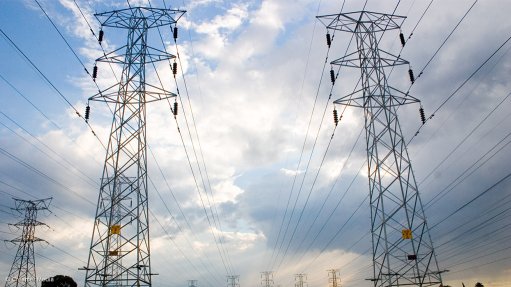
Photo by: Duane Daws
South African power utility Eskom is collaborating with 15 of the world’s largest power providers to investigate fundamental issues of common interest to major energy companies and to develop joint action plans to ensure the improvement of power system security.
Formerly known as the Very Large Grid Operators Association, the GO 15 alliance, which was created in 2004 following several blackouts across the globe, united the world’s largest power grid operators (PGOs) around the shared objective of improving the reliability of energy grids.
Together, the 16 member PGOs represent over 70% of the world’s electricity demand, providing electricity to 3.4-billion consumers on six continents, while being responsible for the integration of 2 518 GW of generation capacity, of which 21% is sourced from renewable-energy sources, onto the grid.
GO 15 president and PJM Interconnection CEO Terry Boston told a media briefing at Eskom’s Megawatt Park, on Wednesday, that the development of GO 15 action plans and their implementation were realised through working groups, joint projects and workshops.
Work progress reports are then presented at the GO 15 annual meeting, held at the end of every year at various international locations and hosted by the GO 15 members on a rotating basis.
“At the meetings, the members share their vision on the future development of the electricity industry related to operation of the large power grids, present individual corporate strategies to address this vision and discuss specific work topics for the association in the coming year,” he commented.
He added that the collaborative meetings had revealed that greater emphasis was being placed by member PGOs on the development of a “new” energy mix, which included renewable generation, energy storage, demand management initiatives and electric vehicle programmes.
Eskom system operator GM Robbie van Heerden noted that, within this working group structure, Eskom had made its largest contribution in the fields of electric vehicle programmes, network sustainability and, most significantly, dynamic stability.
“South Africa has been a leader in the field of dynamic stability, as it operates in a large country with vast transmission lines and population centres that are very far apart,” added Boston.
Meanwhile, utility software executive Alain Steven noted that member PGOs had identified that the greatest inhibitors to the inclusion of renewables onto national grids were administrative and permitting challenges rather than technical ones.
“A survey by our members has indicated that it takes between seven and ten years to build a new transmission line to link renewable power sites, and this is largely owing to difficulties in obtaining the required permits,” he said.
Renewable-energy sites were often located some distance from major load centres, making the presence of reliable transmission line infrastructure critical to leveraging renewably energy.
Besides Eskom, the GO 15 member organisations include the Australian Energy Market Operator; the China Southern Power Grid Company; the Elia Group, from Belgium; KPX, from South Korea; the Midcontinent Independent Systems Operator, from the US; the National Grid, from the UK; the Electric System National Operator, from Brazil; the Power Grid Corporation of India; PJM Interconnection, from the US; Red Eléctrica de España, from Spain; Réseau de Transport d'Électricité, from France; the State Grid Corporation of China; the United Power System, from Russia; the Tokyo Electric Power Company, from Japan; and Terna, from Italy.